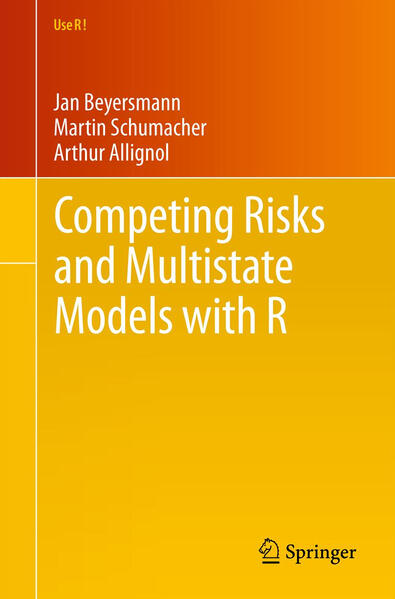
Zustellung: Fr, 30.05. - Mo, 02.06.
Versand in 2 Tagen
VersandkostenfreiBestellen & in Filiale abholen:
This book explains hazard-based analyses of competing risks and multistate data using the R statistical programming code, placing special emphasis on interpretation of results. Includes real data examples, and encourages readers to simulate their own data.
Competing Risks and Multistate Models with R covers models that generalize the analysis of time to a single event. Both R and multistate methods are promoted with a focus on nonparametric methods.
This book explains hazard-based analyses of competing risks and multistate data with R. Special emphasis is placed on the interpretation of the results. A unique feature of this book is that readers are encouraged to simulate their own data based on the transition hazards only, which are the key quantities of the subsequent analyses. This simulation-based approach is supplemented with real data examples from studies in clinical medicine where the authors have been involved.
This book is aimed at data analysts, with a background in standard survival analysis, who wish to understand, analyse and interpret more complex event histories with R. It is also suitable for graduate courses in biostatistics, statistics and epidemiological methods with a focus on non- and semiparametric methods.
The real data examples, R packages, and the entire R code used in the book are available online.
This book explains hazard-based analyses of competing risks and multistate data with R. Special emphasis is placed on the interpretation of the results. A unique feature of this book is that readers are encouraged to simulate their own data based on the transition hazards only, which are the key quantities of the subsequent analyses. This simulation-based approach is supplemented with real data examples from studies in clinical medicine where the authors have been involved.
This book is aimed at data analysts, with a background in standard survival analysis, who wish to understand, analyse and interpret more complex event histories with R. It is also suitable for graduate courses in biostatistics, statistics and epidemiological methods with a focus on non- and semiparametric methods.
The real data examples, R packages, and the entire R code used in the book are available online.
Inhaltsverzeichnis
Data examples. - An informal introduction to hazard-based analyses. - Competing risks. - Multistate modelling of competing risks. - Nonparametric estimation. - Proportional hazards models. - Nonparametric hypothesis testing. - Further topics in competing risks. - Multistate models and their connection to competing risks. - Nonparametric estimation. - Proportional transition hazards models. - Time-dependent covariates and multistate models. - Further topics in multistate modeling.
Produktdetails
Erscheinungsdatum
17. November 2011
Sprache
englisch
Auflage
2012
Seitenanzahl
260
Reihe
Use R!
Autor/Autorin
Jan Beyersmann, Arthur Allignol, Martin Schumacher
Verlag/Hersteller
Produktart
kartoniert
Abbildungen
XI, 245 p. 49 illus.
Gewicht
400 g
Größe (L/B/H)
235/155/15 mm
ISBN
9781461420347
Entdecken Sie mehr
Bewertungen
0 Bewertungen
Es wurden noch keine Bewertungen abgegeben. Schreiben Sie die erste Bewertung zu "Competing Risks and Multistate Models with R" und helfen Sie damit anderen bei der Kaufentscheidung.










